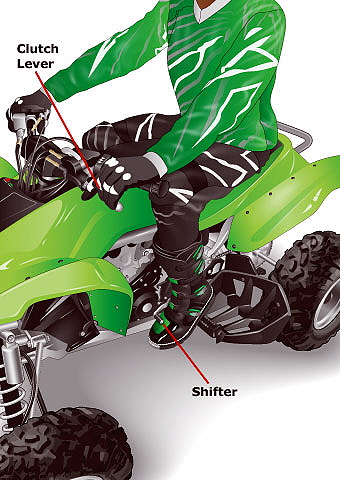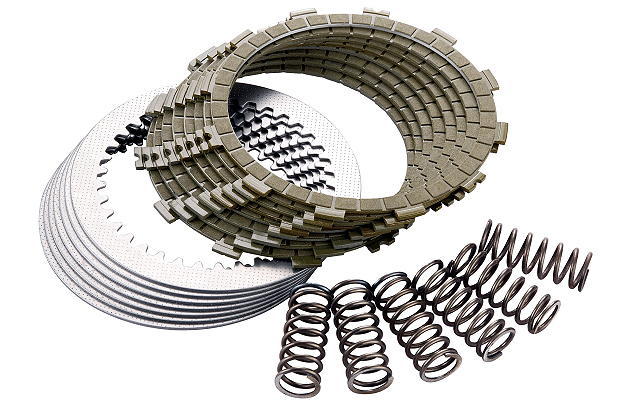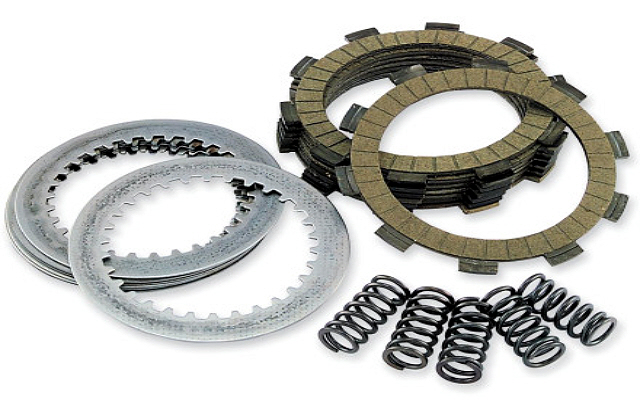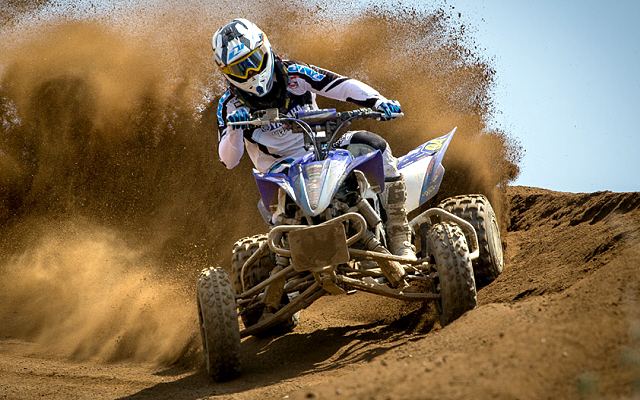ATV Tech: Let’s Talk About the Clutch
We live in a world where there are a lot of transmission choices on our ATVs. Automatics and CVTs have gotten very popular among the utility and side-by-side scene but when it comes to the type of pure performance demanded by ATV racing or aggressive trail riding, the manual clutch is still king.
The fully manual clutch is easily identifiable thanks to a lever on the left side (if you were in the saddle) handlebar. Additionally a foot shifter will be located on this same side of the machine in front of the foot peg.

Learning to feed out the clutch to get underway and timing lever-pulls to correspond with shifts can be a bit of a learning process but it is also a system that rewards the patient rider with the most direct control of how much power gets put to the ground. In this article, we’ll take a look at how a manual clutch works in the hopes of taking some of the fear out of the unknown.
Just a Switch
At its simplest, a clutch is a switch. When activated it disengages the engine from the gear-train (and ultimately, the drive-wheels). When released, the connection is then re-established. Just how does it accomplish this task? A pack of spring-loaded plates nestled inside of a basket that are designed to slip against one another are the key. Engage the clutch and they slip against one another, release it and they lock themselves together. It’s brilliant in its simplicity.
Of course, like all systems, the clutch is a compromise of sorts. The stiffest springs possible would be ideal for maximum performance but guess what? Stiffer springs means stiffer clutch pull at the lever. Overdue it and hand cramping is inevitable. Really overdue it and you wouldn’t have the strength to engage the lever at all.
So the answer then is go for the weakest springs possible right? Nope, not exactly. While doing so would make the lever resistance so easy that a baby could activate it, the lack of pressure at the plates wouldn’t be enough to keep the clutch engaged under power. Another way of saying it- too soft of springs and you will experience slippage.

OEM ATV and aftermarket clutch engineers are often struggling against this compromise by sepc’ing springs that are beefy enough to stand up to the engine’s output without being too stiff as to be uncomfortable for the rider.
Wear You Going?
In a perfect world, a clutch would last forever. Sadly, in our world, clutches are wearing to some degree each and every time they do their job. Being sloppy with the clutch and dragging it or overusing it accelerate this rate of wear exponentially. So truly, this is one of those areas where we have a good deal of control in how long our clutch plates will last us.
The plates consist of two wildly different materials- fiber and metal. The fiber plates are soft but rough, designed to both slip and grip depending on what you want from the clutch. Between these are metal drive plates (steel or aluminum) that connect to the transmission via a hub. The fiber plates, on the other hand, connect to the basket and thus the engine directly. This explains precisely how the connection between engine and transmission is established within the clutch. Get all of the plates to lock up and spin like a single unit and the engine and the transmission are directly connected. Get the fiber plates to spin at a different speed (via slipping) than the metal drive plates and the connection is broken.

The number one enemy of any clutch is heat. The more friction you introduce, the hotter things get. Overheat the clutch too many times and expect to have to replace internal components much quicker. How can you tell if you’re prematurely wearing out your clutch? Slippage, odor and of course, excessive heat.
First, odor is perhaps the easiest for us to identify. A fried clutch has a very distinct and lingering odor (this is true with cars too of course). This usually coincides with heat. The odor of burnt clutch often smells hot- feeling around the clutch cover will confirm this as the entire area may be hot to the touch. Finally slippage is as unique as it is frustrating. It is usually felt when you’re revving the engine but not moving as you’re accustomed to. When starting out, it often feels like something is robbing power before it can reach your drive-wheels (because in fact, that is what’s happening). It can also be felt by slipping out of gear when moving along or clanking loudly/ stalling when first put into gear.

Conclusions
The bottom line is while the clutch performs and invaluable function to our ATV’s performance, the device itself is surprisingly simple and intuitive. Becoming adept at using (rather than abusing) it is a direct path to extending the clutch’s life. Lastly, remember that switching out spring resistance is a very simple and achievable means of changing your clutch’s feel at the lever.

